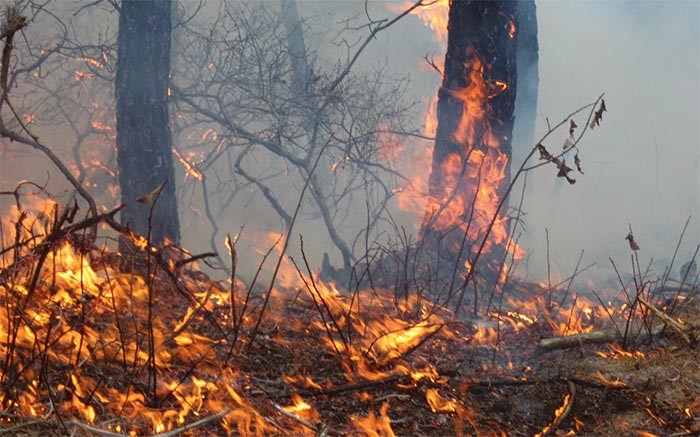As the composition of tree species in forests in southern New England has evolved in recent decades, many of those forests have become more vulnerable to drought. The reason for the changing forest composition can be traced, in part, to the well-meaning efforts of the national fire-suppression campaign begun in the 1930s and still promoted today by spokesman Smokey the Bear.
That’s the conclusion drawn by Pennsylvania State University professor Marc Abrams, who has spent his career documenting how forests have changed. “For thousands of years, most forests [in southern New England] were dominated by oak, pine, and hickory,” he said. “These are not only fire-adapted species, but they don’t reproduce well under adult trees unless the forest is relatively open.”
Fires had been a regular occurrence in many eastern forests for centuries, not only because of natural causes like lightning strikes, but also because Native Americans actively burned forests. Humans’ burning of the forests only increased after European settlement in what Abrams called “the clear-cut era” of the late 1800s. But the government policy of putting out fires as quickly as possible has resulted in a 90- to 95-percent decrease in burned acreage in the last 80 years.
“Forests that were burned once or twice a decade in the past were no longer being burned, and that allowed the forest succession process to take place where more shade-tolerant species came in underneath the oaks and pines,” Abrams said.
The fire-adapted species with thick bark and deep roots are also the trees that are most tolerant of drought, but they have now largely been replaced by shade-tolerant species like maple, beech, and birch that are more sensitive to drought and intolerant of fire.
Abrams said that the forests of northern New England have been less affected by the changes he has observed elsewhere. That’s because the mix of maple, beech, and birch species and the cooler, wetter environment are less conducive to burning, so these forests have experienced fewer fires historically.
“This change to less drought resistance – part of a process known as mesophication – has serious implications in a warming climate, which portends more frequent and more severe droughts,” said Abrams. Even though climate impacts have been somewhat benign in the eastern United States so far (there has actually been an increase in precipitation over historical norms), today’s forests in areas of southern New England will be less drought-resilient than in the past.
Reintroducing fire to the ecosystem to transition back to a more fire-tolerant and drought-resistant forest is not possible, Abrams said. “We know what needs to be done, but to do it on a large scale is problematic. There are alternatives, though. There are ways to use different cutting methods and planting methods to open up forests and encourage the right species mix even without using burning.”


